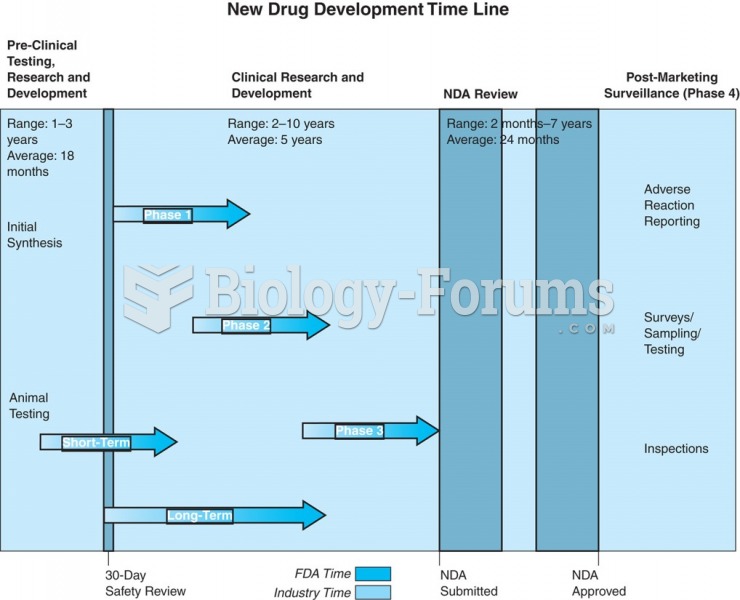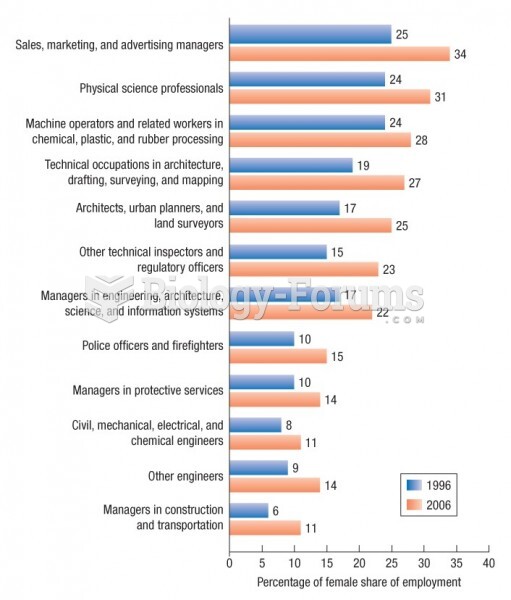|
|
|
Earwax has antimicrobial properties that reduce the viability of bacteria and fungus in the human ear.
On average, the stomach produces 2 L of hydrochloric acid per day.
Medication errors are three times higher among children and infants than with adults.
Drying your hands with a paper towel will reduce the bacterial count on your hands by 45–60%.
Over time, chronic hepatitis B virus and hepatitis C virus infections can progress to advanced liver disease, liver failure, and hepatocellular carcinoma. Unlike other forms, more than 80% of hepatitis C infections become chronic and lead to liver disease. When combined with hepatitis B, hepatitis C now accounts for 75% percent of all cases of liver disease around the world. Liver failure caused by hepatitis C is now leading cause of liver transplants in the United States.







